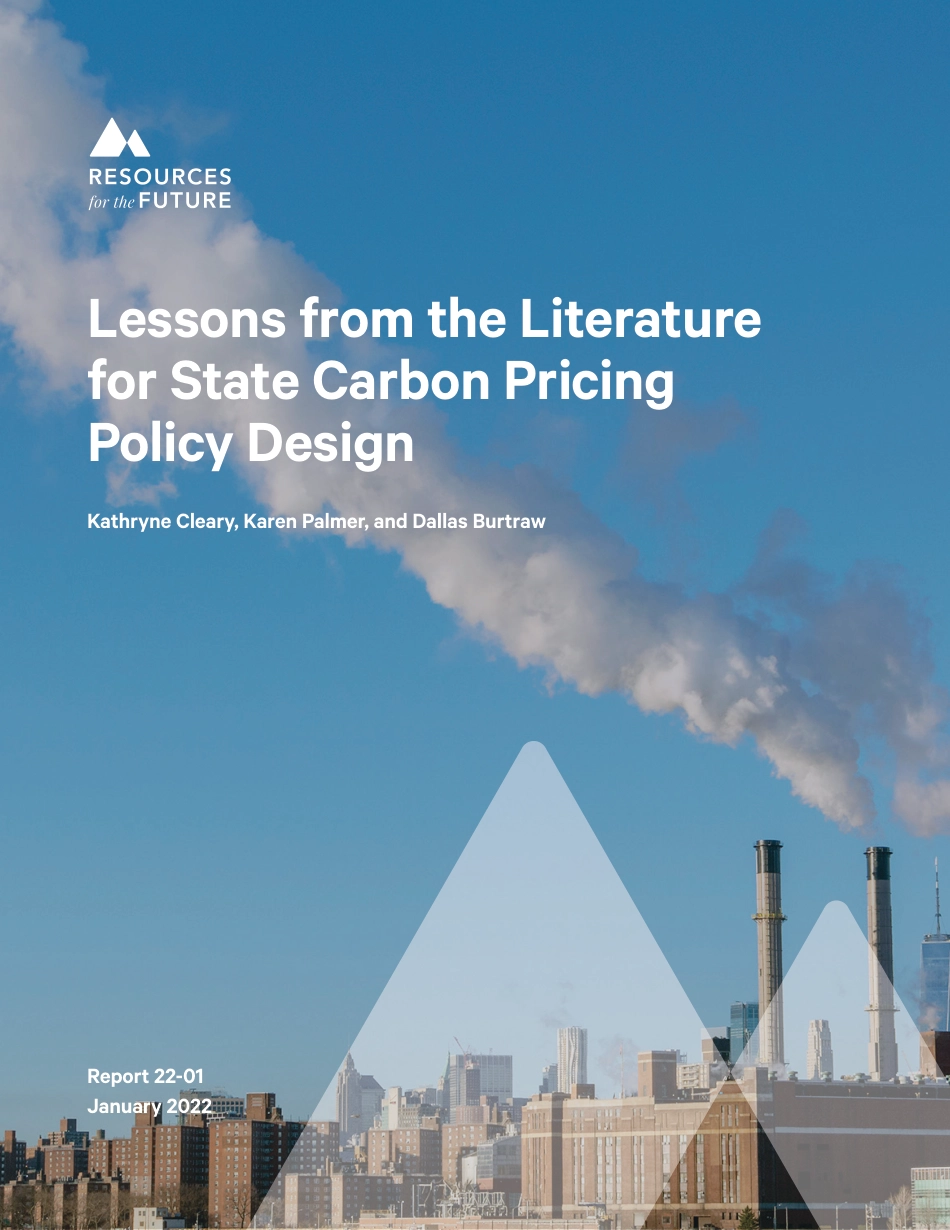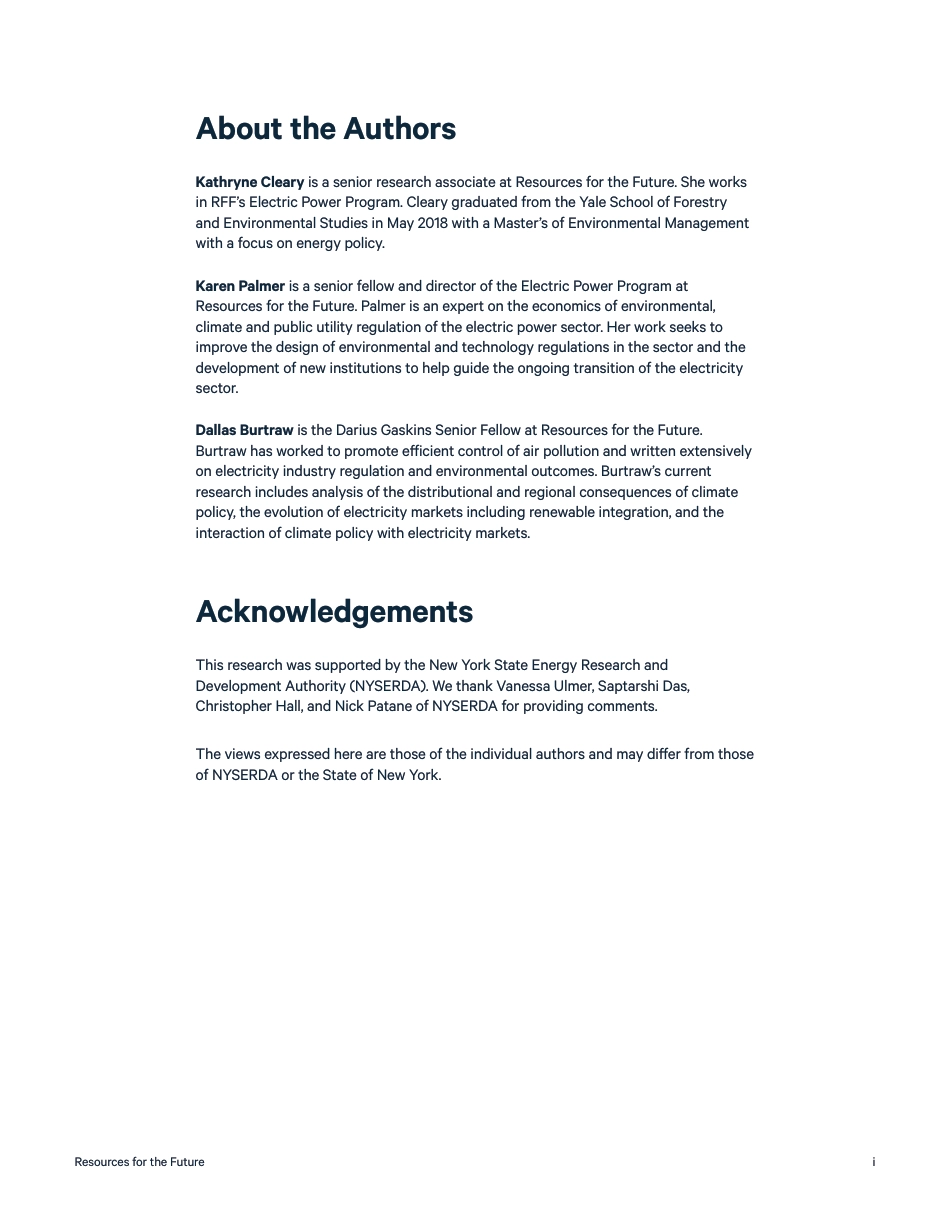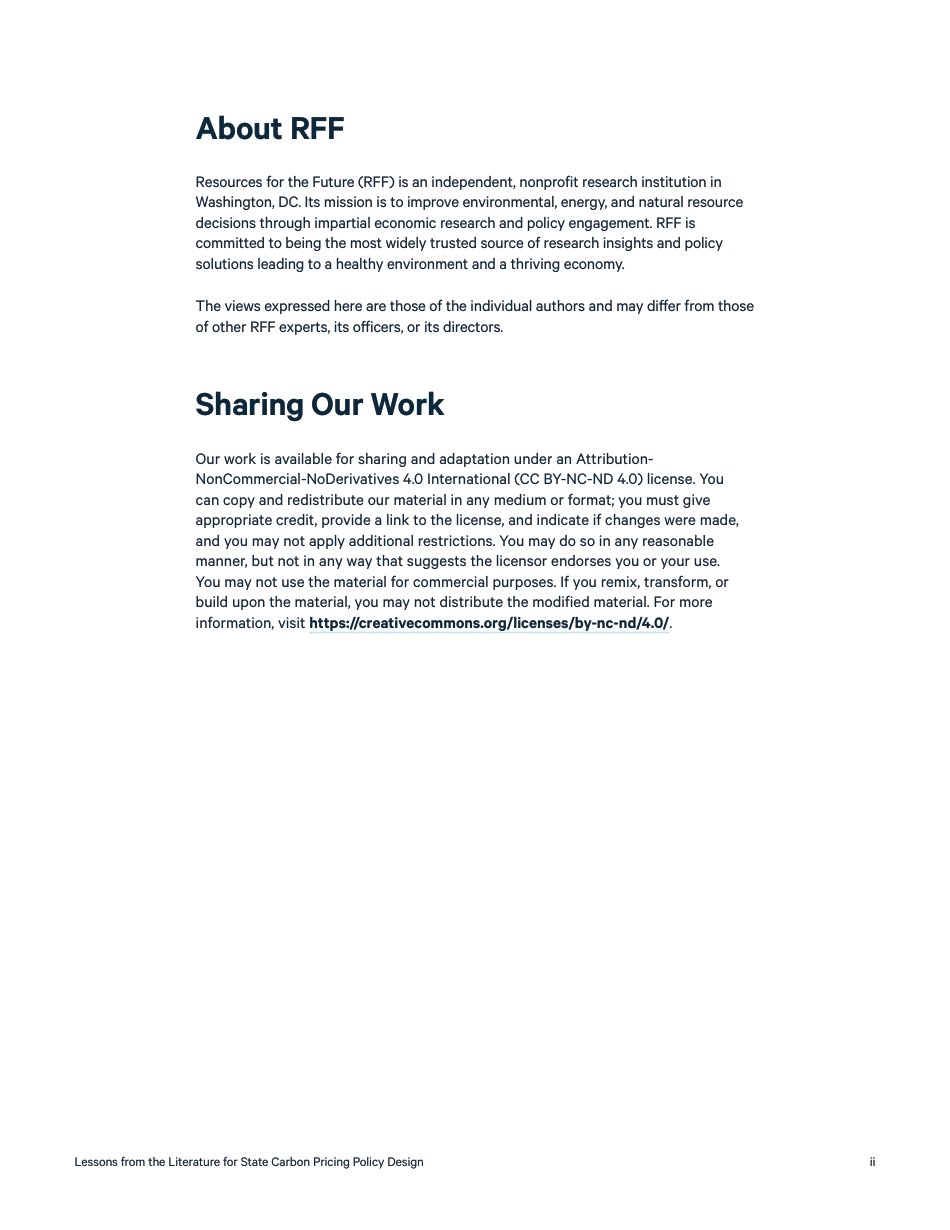Lessons from the Literature for State Carbon Pricing Policy DesignALessons from the Literature for State Carbon Pricing Policy Design Kathryne Cleary, Karen Palmer, and Dallas BurtrawReport 22-01January 2022Resources for the FutureiAbout the AuthorsKathryne Cleary is a senior research associate at Resources for the Future. She works in RFF’s Electric Power Program. Cleary graduated from the Yale School of Forestry and Environmental Studies in May 2018 with a Master’s of Environmental Management with a focus on energy policy.Karen Palmer is a senior fellow and director of the Electric Power Program at Resources for the Future. Palmer is an expert on the economics of environmental, climate and public utility regulation of the electric power sector. Her work seeks to improve the design of environmental and technology regulations in the sector and the development of new institutions to help guide the ongoing transition of the electricity sector.Dallas Burtraw is the Darius Gaskins Senior Fellow at Resources for the Future. Burtraw has worked to promote efficient control of air pollution and written extensively on electricity industry regulation and environmental outcomes. Burtraw’s current research includes analysis of the distributional and regional consequences of climate policy, the evolution of electricity markets including renewable integration, and the interaction of climate policy with electricity markets. Acknowledgements This research was supported by the New York State Energy Research and Development Authority (NYSERDA). We thank Vanessa Ulmer, Saptarshi Das, Christopher Hall, and Nick Patane of NYSERDA for providing comments. The views expressed here are those of the individual authors and may differ from...



